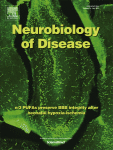
Reducing premature KCC2 expression rescues seizure susceptibility and spine morphology in atypical febrile seizures
Awad PN, Sanon NT, Chattopadhyaya B, Carriço JN, Ouardouz M, Gagné J, Duss S, Wolf D, Desgent S, Cancedda L, Carmant L, Di Cristo G
Contributed by Sloka Iyengar
Neurobiology of Disease, 91:10-20. July 2016 doi: 10.1016/j.nbd.2016.02.014. Epub 2016 Feb 10.
Atypical febrile seizures are lateralized, prolonged and numerous; and can be a risk factor for epilepsy later in life. The link between cortical malformations, febrile seizures and epilepsy has been suggested, but the underlying mechanism isn’t fully understood. In this study, the scientists used a rat model (“LHS rats”) where cortical dysplasia and hyperthermia-induced seizures eventually lead to epilepsy and associated neurological sequelae. Given the role of KCC2 in GABAergic neurotransmission, they looked at expression and function of KCC2 in LHS rats. They found an increase in levels of KCC2 protein in these rats, a reduction in number of dendritic spines and abnormal dendritic maturation in area CA1 of the hippocampus. Reducing KCC2 protein expression using in-utero electroporation of shRNA reduced seizure number and corrected deficits in dendritic spines. Hence, alterations in KCC2 may be a common link between cortical dysplasia, febrile seizures and epilepsy.
Subscribe to the ILAE Newsletter
To subscribe, please click on the button below.
Please send me information about ILAE activities and other
information of interest to the epilepsy community